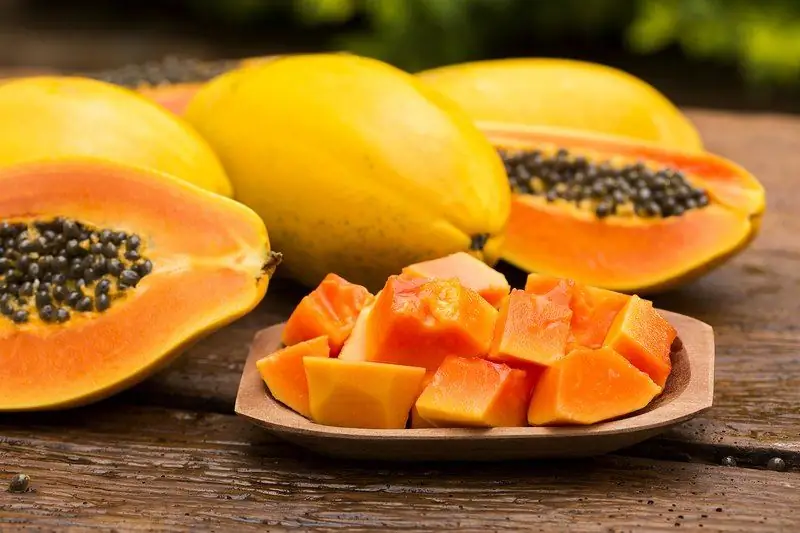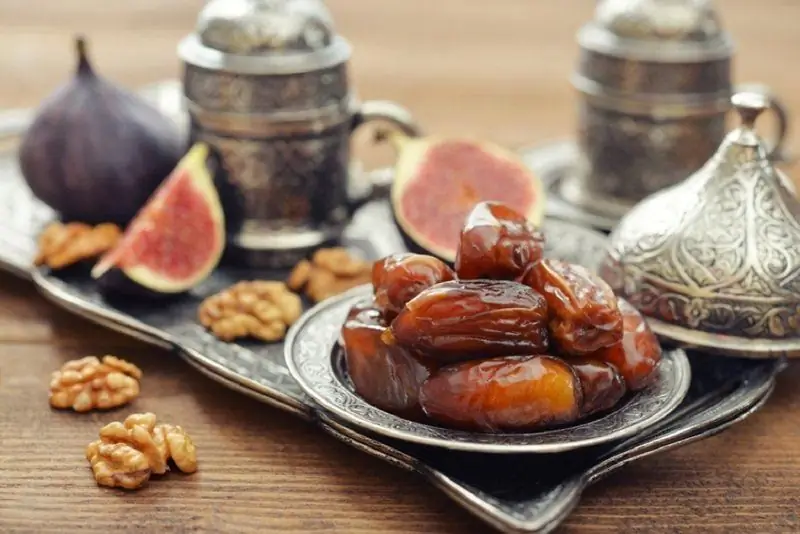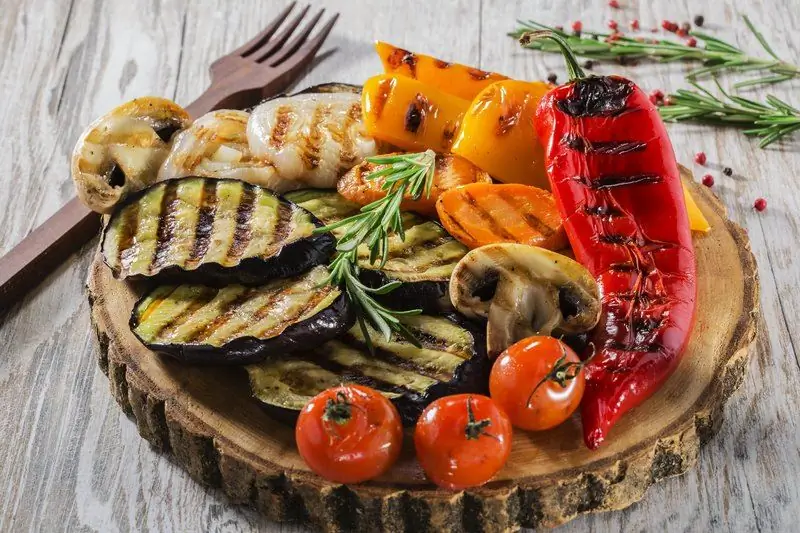
Table of contents:
- Author Bailey Albertson [email protected].
- Public 2023-12-17 12:53.
- Last modified 2025-01-23 12:41.
What vegetables and fruits can be ripened at home

The crop in the beds does not always have the opportunity to ripen on its own. In unfavorable weather or with an increased risk of morbidity in garden crops, summer residents are forced to harvest the fruits earlier than expected. At home, you can ripen unripe vegetables and fruits - bring them to the state of consumer ripeness.
Potatoes

It is customary to dig up potato tubers in the last days of August. By this time, the skin that covers them should be rough.
If rainy and cold weather is established before the due date for harvesting, there is a risk of rotting tubers in the ground. In this case it is impossible to hesitate. When the first sunny days come, it is necessary to start digging out the potatoes that did not have time to ripen.
This is done as carefully as possible so as not to damage the thin skin. Wet soil is not scraped off the tubers. They are left to dry in the fresh air under a canopy for 2 hours. It is impossible to dry the crop longer. Potatoes can turn green, deteriorate due to the solanine formed in them.
At the end of drying, carefully remove the soil from each tuber with your hands. The crop is left in a cool and dark room. It should be dry in there. The potatoes are left to “lie down” for 2-3 weeks. During this time, it will finally dry out and ripen.
Tomatoes

Experienced gardeners often remove unripe tomatoes from bushes. This measure avoids crop losses due to crop disease caused by wet weather and low air temperatures.
The fruits that did not have time to ripen are plucked at the stage of blange ripeness - they should turn white on the bushes. From this moment on, the tomatoes do not increase in size, but only ripen.
Tomatoes picked ahead of time are put in a box or left on the table. They are kept in a warm room (from + 20 ° C to + 25 ° C) for 30-40 days. In the light, the fruits ripen faster, in the dark, the process of bringing them to ripeness slows down.
Pears

Summer residents who want to extend the shelf life of pears remove them from the branches earlier than the due date. Reception helps to increase the keeping quality of fruits.
Pears are picked in a green state when a "blush" is just beginning to appear on them. After that, the crop is laid out in a warm room (temperature range from + 18⁰C to + 20⁰C) and left for 5 days. The fruits are checked daily for ripeness.
A few simple techniques will help speed up the process of bringing the crop to maturity:
- pears torn off prematurely are kept in the refrigerator for 1 day, then moved to a warm room;
- put bananas or apples next to them so that the ethylene emitted by them accelerates the ripening of pears.
Peppers

It is permissible to remove peppers from bushes without waiting for them to become ripe. The fruits can also be eaten at the stage of technical ripeness, when they are still green.
If you want to ripen the crop, use one of the methods for bringing the pepper to the desired condition:
- lay out the unripe crop in boxes in several layers and leave in a cool place (from + 10 ° C to + 12 ° C) for 30 days;
- leave the fruits on the table in a living room at room temperature for 14 days;
- rip a bush with unripe peppers out of the ground and hang it with its root system up in a cool room for 30 days (with this method of ripening, more nutrients accumulate in the fruits than with other methods of bringing the crop to ripeness);
- transplant a bush with fruits that did not have time to ripen into a pot and leave it in the apartment on the windowsill for ripening peppers and in order to extend the fruiting period of the plant for the entire winter.
Apples

To increase the keeping quality of summer and spring varieties of apples, they are plucked from the branches, without waiting for ripeness. Winter varieties simply do not have enough time to ripen on a tree.
Unripe fruits are easy to ripen. The duration of this process is determined by the variety of apples. When ripening, the crop acquires the desired flavor characteristics.
If it is necessary for the crop to ripen slowly, the temperature regime is reduced.
Pumpkin

The pumpkin may not have time to ripen before frost. If the crop is not removed in time, it will freeze with a drop in temperature outside and will not be able to be stored for a long time in the future. Some pumpkin varieties simply do not have time to fully mature over the summer.
To make the pumpkin ripe at home, it is removed from the garden on a warm, dry day. This should be done before frost. Damaged and frozen fruits are not stored for a long time, for this reason they are harvested and transported carefully.
Separate the pumpkin from the whip with a knife so as not to damage the pulp. In this case, a stalk is left with a length of at least 5 cm.
The harvested crop is cleaned from the ground, sorted, dried and sent for ripening in a warm place. The pumpkin will ripen from several weeks to 2 months.
Conditions up to + 20 ° C are considered comfortable for storage.
Melons

Melons are also capable of ripening at home, but only if they are removed from the garden at the correct stage. If the melon is completely green, it is not picked - it will not ripen at home. A fruit that has already slightly turned yellow can reach ripeness.
The readiness for harvesting is also determined by the net on the skin (if it is present in the variety). If the fruit is half cracked, then it's time to pick it.
Melons should be removed with the tail. In length, it should be at least 5 cm. Cut the fruit off the lash with scissors or secateurs.
Recommended:
Papaya: Benefits And Harms For The Body Of Women And Men, Fresh Fruits And Dried Candied Fruits, Reviews

Should you include papaya in your diet and why? Does papaya help you lose weight? To whom this fruit is contraindicated. Customer reviews about eating papaya
Dates: The Benefits And Harms For The Body Of Women And Men Of Dried Fruits And Compote From Them, Reviews

Dates: benefits, harm, contraindications, calories. Consumer reviews and doctors' opinions
Grilled Vegetables And Mushrooms: Step By Step Recipes With Photos On The Grill, Skewers And In Foil

How to cook vegetables and mushrooms on the grill in different ways. Step-by-step instructions with photos and videos
Barley Porridge With Vegetables: Step-by-step Recipes, Including In A Slow Cooker And With Mushrooms, Photo And Video

Step-by-step recipes with photos of pearl barley porridge with vegetables. Different cooking methods: on the stove, in the oven, in a multicooker
How To Test Fruits And Vegetables For Pesticides At Home

How to check fruits and vegetables at home for pesticides or nitrates
